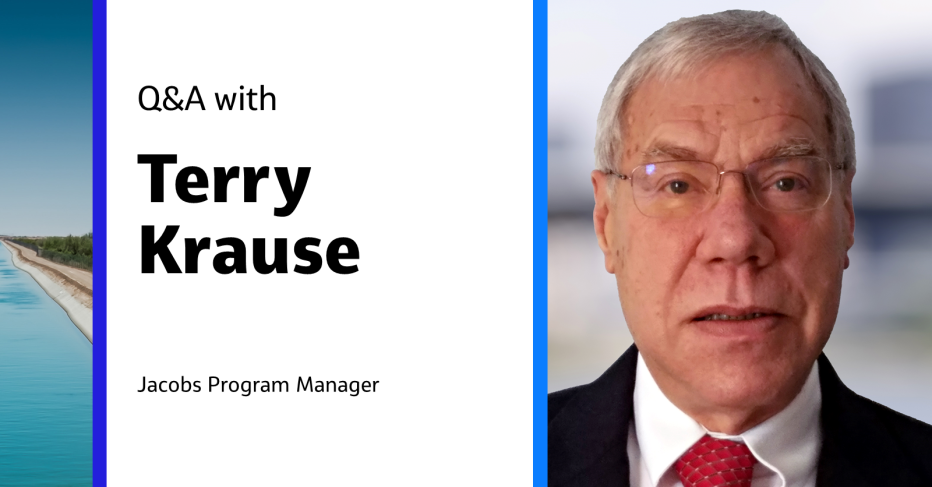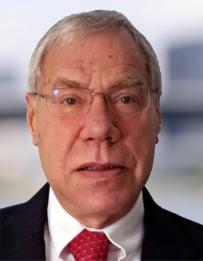
Moving and storing water is essential across the entire water cycle. From drinking water supply to wastewater collection and wet weather management, conveyance and storage solutions like pipelines and tunnels are integral to our OneWater approach at Jacobs.
These solutions are also critical as communities across the world respond to the impacts of climate change and must manage too much, or too little, water. The ability to efficiently distribute limited water supplies, safely capture urban flood waters, or store water for future use has never been more important.
In this Q&A, we connect with Jacobs Program Manager Terry Krause, who has spent 50 years supporting clients with major water infrastructure projects globally. Terry discusses the future of water conveyance and his role supporting the Delta Conveyance Project in California – a major program to improve water supply resilience by modernizing State Water Project conveyance infrastructure in the Sacramento-San Joaquin Delta.
What are the biggest challenges in water conveyance?
One of the biggest challenges today related to water conveyance is the ability to move water from its source to where the ultimate demand is. In many cases, this involves conveying water across multiple jurisdictions and even multiple states. For example, in California, the current State Water Project moves water from its source in Northern California to the San Francisco Bay and Southern California regions. This requires a tremendous amount of cooperation between many stakeholders. This is the situation faced in many locations throughout the Western U.S., with collaboration a critical factor in the success of large-scale water conveyance programs.
How do you help clients to think differently to respond to future challenges?
Conveying large quantities of water long distances is an expensive proposition. However, in many cases, this solution is economically competitive with other water supply options such desalination and reuse. For example, a recent report (The Economy of the State Water Project) issued by the California Department of Water Resources and Berkeley Research Group shows how California’s large water conveyance project is very economical compared to other potential sources of water. While most clients today are faced with funding challenges, it is important to work with them to address their short-term needs while continuing to plan and implement the best long-term solutions that continue to support a growing population and economy.
As climate changes threatens the availability of water supplies, solutions that move and store water are critical for climate response. Where do you see the industry heading?
Moving water long distances and then storing it is not a new concept but one that is becoming increasingly important as water authorities try to deal with the impacts of climate change and to restore and/or increase the reliability of their water supplies. In particular, we’re seeing renewed interest in water conveyance and storage projects in regions that are already experiencing climate change impacts such as more severe droughts or more frequent and/or higher intensity storms. In addition to moving freshwater sources, water conveyance is often an important component of water reuse and desalination programs that are being more widely adopted to create drought-resilient water supplies. We can therefore expect to see an increased focus on incorporating water conveyance and storage into broader water supply portfolios.
California is undertaking its largest-ever water conveyance project to bolster the reliability of the state’s water supplies – the Delta Conveyance Project. How is Jacobs supporting this major program?
Jacobs is currently serving as the Engineering Design Manager for the Delta Conveyance Design & Construction Authority (DCA) and I’m managing the Jacobs team working on that project. The DCA was established to design and construct the Delta Conveyance Project under the oversight of the California Department of Water Resources (DWR). This major program would modernize State Water Project conveyance infrastructure in the Sacramento-San Joaquin Delta, including the construction of a 36-foot- diameter underground tunnel running 45 miles. The project will capture and move water from large but infrequent storms to save more water for use during extended dry periods. In our role , Jacobs is essentially acting as the DCA’s engineering team and is providing conceptual design engineering support to DWR for all of their environmental permitting activities.
DWR certified the final Environmental Impact Report and selected the approved project in December 2023. Since then, the Jacobs team continues to develop the conceptual design of the approved project and we’re supporting DCA with their program delivery planning, communications, environmental coordination and geotechnical exploration activities.
Is there a project you’re particularly proud of?
One project that I am particularly proud of is the Strategic Tunnel Enhancement Program (STEP) in Abu Dhabi, UAE – a major deep tunnel sewer program designed to improve the Abu Dhabi’s wastewater management capacity. In a very short period, we assembled, and stood up in the client’s office, a diverse and experienced team from across the globe. Drawing on the successful work we’d previously done in Singapore, this small team went on to validate the client’s proposed deep tunnel sewer conceptual plan, prepare preliminary designs, develop bidding documents and tender six major design-build contracts all within just over a year, which met the client’s ambitious program schedule. Over the following years, STEP was successfully delivered and has become a key reference project for similar deep tunnel sewer programs across the world.
About the interviewee

Terry Krause is a seasoned program manager at Jacobs with 50 years of experience in all aspects of water and wastewater treatment as well as wastewater collection and water storage and distribution systems. This experience ranges from preliminary studies through detailed engineering designs and construction related services. He has supported projects both nationally and internationally, including alternative delivery approaches such as design-build. Terry has a bachelor’s degree in civil/environmental engineering from the University of Wisconsin-Madison and a master’s degree in civil engineering from Northwestern University. He is a registered professional engineer in nine states plus the District of Columbia, a Board-Certified Environmental Engineer by the American Academy of Environmental Engineers and Scientists and a Water Environment Federation Fellow.














































